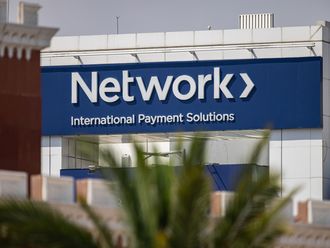The liquidity in the Mena region has always been closely associated with the movement in oil prices. Although the banking sector witnessed shock waves resulting from the 2009 financial crisis, which dried up liquidity across the globe, record oil prices during that period ensured that the government had enough ammunition to pump up liquidity within the system to weather the storm. However, the current situation is different from the global financial crisis, because lower oil prices are putting a strain on government revenues, while spending continues to be aligned with the long-term vision of regional governments. Resultantly, the region is now facing a number of challenges in tackling burgeoning deficits, coupled with slowing economic activity which has started impacting key sectors. The banking sector remained resilient until 2015, but government decisions to draw down deposits and issue local denominated currency notes to fund deficits drained out liquidity from the system.
Funding costs
Banks in the GCC region have experienced a challenging period during 2015 and 2016 as deposit mobilisation and slowdown in economic activity dampened the operating environment. Furthermore, banks are witnessing a steep rise in funding costs due to the liquidity squeeze across the sector. Since regional banks continue to rely on customer deposits, especially the public sector as their main source of funding, inability to mobilise deposits will continue to impact growth of the entire sector. Total deposits of the GCC region grew by 2.3 per cent in 2016 compared to 2.5 per cent the previous year. The slowdown in growth was most noticeable in Saudi Arabia as it grew by just 0.8 per cent in 2016 compared to a surge of 6.2 per cent witnessed in the UAE. Banks in Saudi Arabia, with the largest exposure to government related entities, reported sharp declines in deposits. Qatar, on the other hand, witnessed a decline of 3.5 per cent in customer deposits during 2016 compared to a growth of 1.9 per cent the previous year. Moreover, the rising liquidity crunch within the banking system was evident from the three-month interbank rates, which rose across the region in 2016. The most obvious change was again witnessed in Saudi Arabia as SAIBOR increased from 0.61 per cent at the end of 2015 to 1.80 per cent in 2016 after peaking out at 2.06 per cent in September 2016. A similar trend was realised in the UAE and Qatar where deposit mobilisation was becoming challenging, as government related entities continued to liquidate their deposits to support budget deficits.
International markets
Regional governments comprehended that it might be prudent to raise debt from international markets rather than drawing down reserves and deposits parked with local banks as it was draining the liquidity within banks. As a result, the debt market gained traction in the past 12 months and is gradually becoming an important source of funding for both public and private sectors. In the GCC, Saudi Arabia, Qatar, the UAE, Oman and Bahrain have all issued bonds and syndicated loans from international markets during 2016 to the tune of $58 billion (Dh212.8 billion), while the sukuk market was close to $13 billion. Qatar raised $14 billion worth of sovereign debt in 2016, including a $9 billion US dollar-denominated bond in May 2016. Saudi Arabia raised $17.5 billion, a landmark deal as it was considered important to revive investor confidence and ease liquidity within the banking sector. In 2017, Kuwait raised $8 billion from an international bond sale, and plans to be more prudent in tapping the international debt market going forward.
Rebound in oil prices
Since the fourth quarter of 2016, several measures adopted by the government and central banks have eased the liquidity environment across the region. Firstly, the gradual rebound in oil prices, which can be partly attributed to an agreement between Opec and non-Opec members to cut-down production. Secondly, GCC economies have implemented a mix of spending cuts and taken austerity measures in their state budgets for 2017. Thirdly, the governments have also resorted to reducing the public-sector burden by introducing much needed reforms across the region. Last and the most important trigger was raising debt by issuing international bonds to fund its deficits. All these factors have played a pivotal role in improving liquidity, though it has yet to fully resolve the problem or reach the levels seen in 2014. Further, the degree of improvement in liquidity varies from country to country within the region, mainly due to measures adopted by central banks. For example, Saudi Arabia has experienced a noticeable improvement in liquidity since October 2016, which can be substantiated by the decline in interbank rates from 2.08 per cent in September 2016 to 1.42 per cent in February 2017. The UAE, on the other hand, is experiencing a squeeze in liquidity as interbank rates have risen in the past three to four months. Kuwait and Qatar have been relatively stable in the past four to six months, indicating the liquidity within the sector is currently within a manageable threshold for local banks.
Easing apprehension
In conclusion, the region is undergoing a challenging period as the liquidity environment is still vulnerable and a cause of concern for central banks. Although, the apprehension has gradually eased since the fourth quarter of 2016, thanks to the measures discussed above, the catalyst is temporary and expected to fade out as the government will utilise the funds for supporting deficits. Additionally, the tightening of interest rates following the US Fed’s decision to hike rates is also likely to put additional pressure on the banking sector. Rising cost of funding will lead to slippages in asset quality and erode earnings, and thereby have a direct impact on capital adequacy ratios. Despite encouraging signs, the central banks will keep a close tab on the situation and introduce further measures to support the banking sector, an integral part of the broader economy.
Shailesh Dash, Founder and CEO, Al Masah Capital












